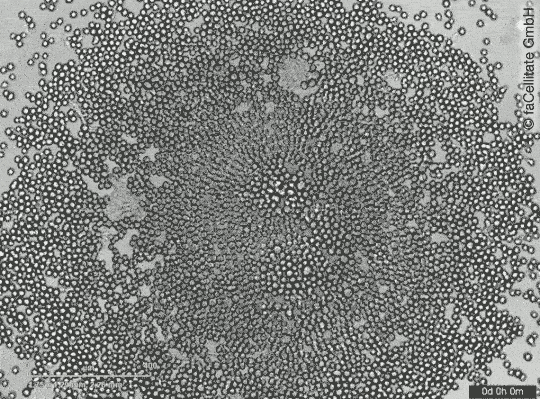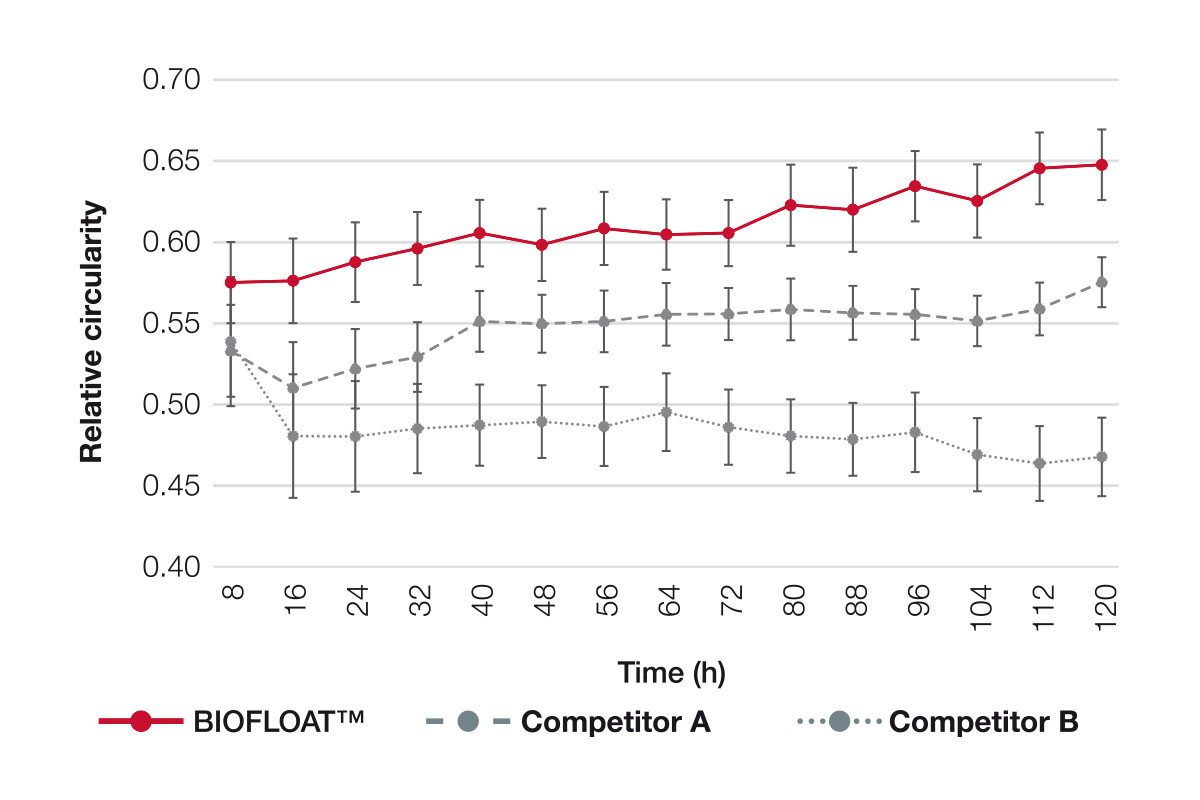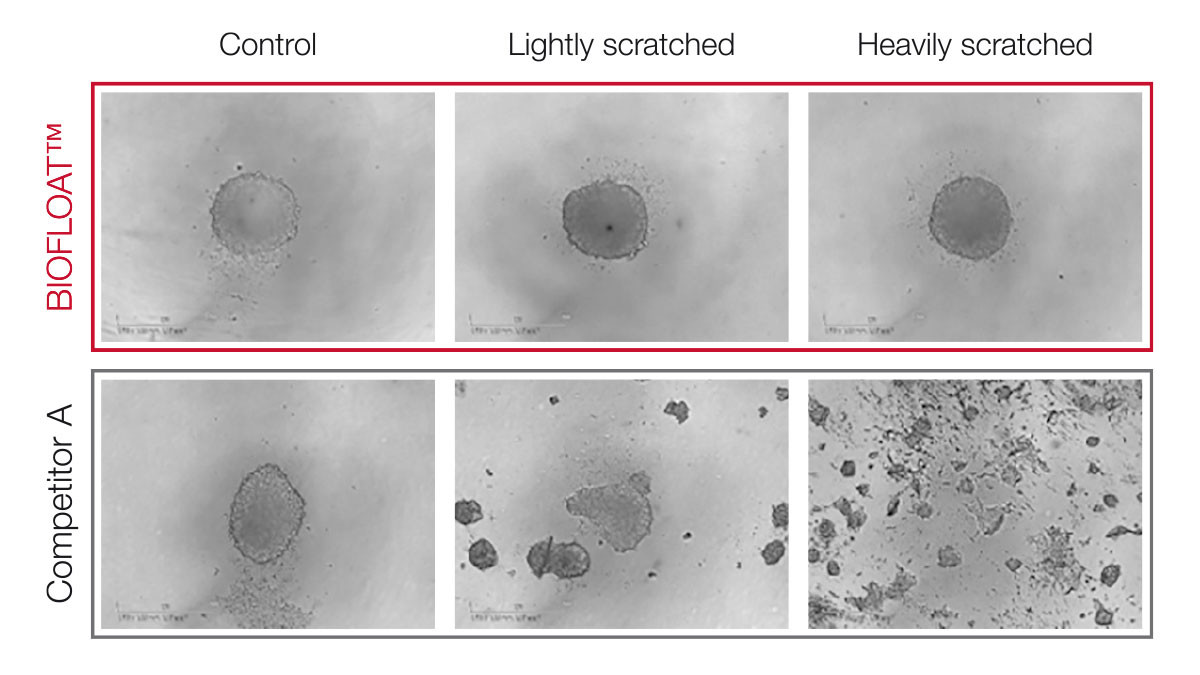
The cultivation of 3D cell cultures is both challenging and time-consuming. With the innovative BIOFLOAT™ cell culture plates, SARSTEDT is now offering a reliable solution for creating particularly even spheroids in a quick and reproducible manner.
The innovative high-grade anti-adhesive surface of the BIOFLOAT™ cell culture plates acts as an anti-stick coating. The cells form cell-to-cell contacts and aggregate primarily to one very evenly round spheroid per well (>95%). This leads to a high reproducibility of your results.

